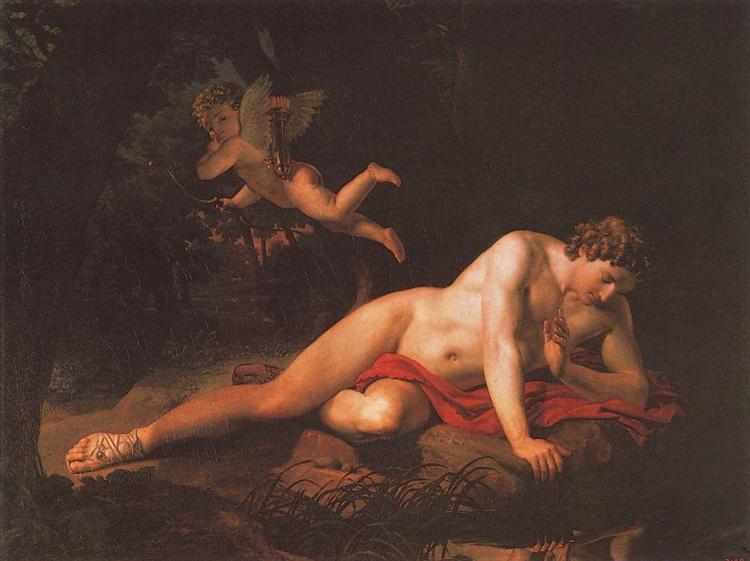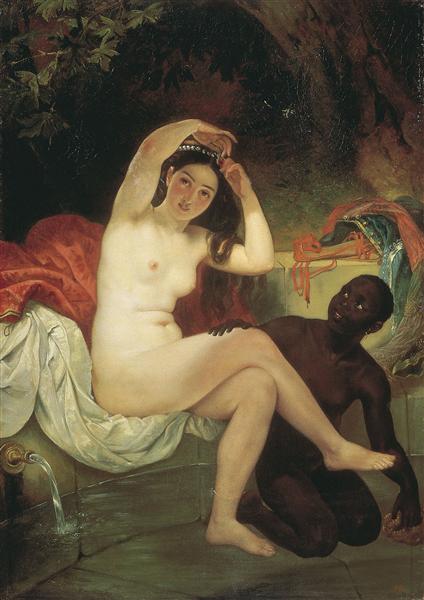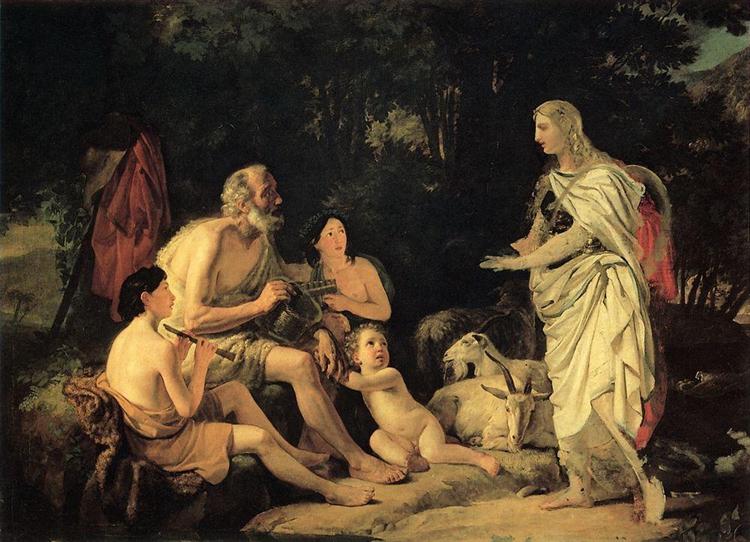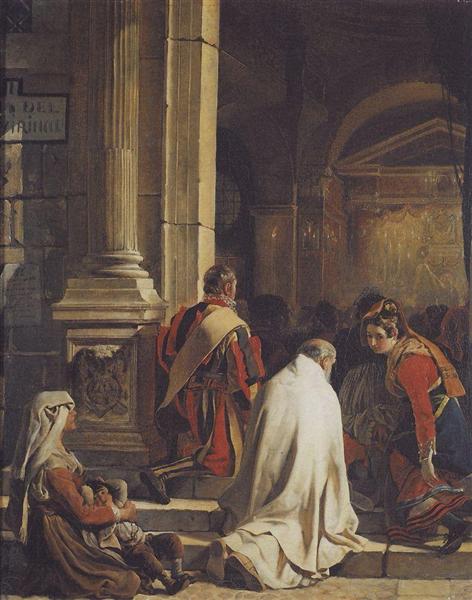
In 1819 Bryullov executed as a curriculum, that is, on the subject set by the Academy, the painting “Narcissus looking into the water.” Together with the ability to convey the plasticity of the nude figure in its statuary perfection, methods were found in it to revive the very poetry of the myth about a beautiful young man, bewitched by his own beauty.
The black-and-white score with an eye on the paintings of Correggio and Caravaggio at the same time – soft golden light enveloping the figure of Narcissus against the background of a shaded “landscape interior” – a kind of independent creative inspiration of the student. Bryullov understood, felt the possibilities hidden in the found technique, and we can say that Narcissus became the prototype of that pictorial theme, which is varied in the light effects of his future paintings. The very idea of reviving the classics, transforming educational casts from a plaster classroom into a sensually seductive, but necessarily, as required by the academic code, “noble” beauty, this slight breeze of romantic taste in the atmosphere of an academic studio was the first experience of that “symbiosis of antism with romanticism” (expression Nikolai Nadezhdin), the crown of which will later become “The Last Day of Pompeii”.
It is curious that the painting of a nineteen-year-old student was bought by Andrei Ivanov, one of Bryullov’s teachers, Alexander Ivanov’s father, and adorned his workshop until it was acquired by the Academy for its museum in 1842. By the way, the head of Narcissus somehow suspiciously resembles the features of Bryullov himself, well known from his numerous self-portraits.
Self-portrait as Narcissus! What is this – a guess about oneself, an indication of a trait of character that is known behind oneself and a warning to oneself: “you sow character – you reap fate”? Narcissism, narcissism, drowning and death in the arms of the Apollonian beauty of one’s own face, that is, aestheticism as a kind of suicide – what a strange prophecy in the light of the future fate of the artist.
Year of painting: 1819.
Dimensions of the painting: 162 x 209.5 cm.
Material: canvas.
Writing technique: oil.
Genre: mythological painting.
Style: Neoclassicism.
Gallery: State Russian Museum, St. Petersburg, Russian Federation.


